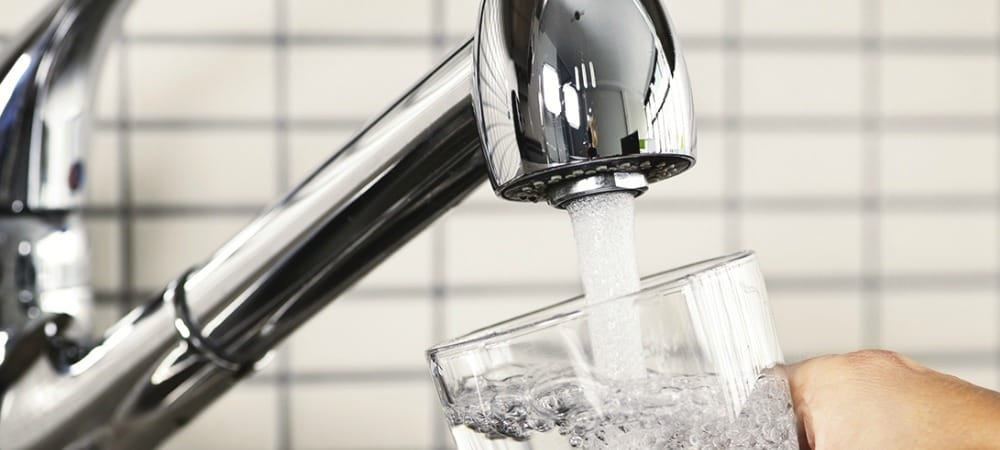
Chemical Mixtures May Interact and Raise Cancer Risks
By Sydney Evans, Science Analyst and Monica Amarelo, Director of Communications
- A complex "toxic cocktail" of chemicals in U.S. drinking water could result in more than 100,000 cancer cases over a lifetime.
- This peer-reviewed study by EWG researchers is the first to look at the cumulative effect of 22 carcinogenic pollutants, including arsenic, disinfection byproducts and radioactive contaminants.
- Even though most community water systems meet government standards, the level of contaminants found in tap water still poses health risks.
- Reducing the levels of water contaminants is especially important during pregnancy and for protecting the health of young children.
A peer-reviewed study by EWG researchers found that a toxic cocktail of chemical pollutants in U.S. drinking water could result in more than 100,000 cancer cases over a lifetime. This is the first study to conduct a cumulative assessment of cancer risk due to carcinogenic contaminants in drinking water nationwide.
EWG analyzed state and federal data on carcinogens and other toxic contaminants that were detected from 2010 to 2017 in more than 48,000 community water systems. The study does not address contaminants in the drinking water of 13.5 million American households that rely on private wells.
EWG’s estimates of cancer risk from water contaminants are conservative. The study only assessed 22 carcinogenic contaminants, not an exhaustive list. Many other contaminants in drinking water may pose health risks other than cancer.
Toxic Chemical Cocktail
Exposure to multiple contaminants in drinking water over time can have a cumulative effect. Water contaminants are assessed and regulated one at a time, but tap water contains mixtures of many contaminants. People aren’t exposed to drinking water contaminants one at a time, or only once. This cumulative risk assessment estimates how a complex combination of chemicals and contaminants might harm health.
A majority of the cancer cases we calculated are because of arsenic, a naturally occurring chemical; byproducts of disinfectants added to drinking water; and radioactive chemicals such as radium and uranium.
Cumulative cancer risk assessments are the standard approach for air quality evaluations by the Environmental Protection Agency, but they have never before been applied to a national database of drinking water contaminants. This method follows the approach used in the National Air Toxics Assessment, where the overall cancer risk represents a statistical probability of developing cancer due to exposure to an individual contaminant or a mixture of contaminants. The calculated cancer risk applies to a statistical lifetime, or approximately 70 years.
Drinking Water in 48,000 Communities
Water systems with the highest risk tend to serve smaller communities and rely on groundwater. These systems typically lack the resources and funding to manage contamination effectively. These communities often need improved infrastructure to provide safe drinking water to their residents.
Arsenic is naturally occurring and seeps into groundwater. Areas that suffer from water scarcity challenges tend to have higher risks, since there's less water to dilute contaminants, which leads chemicals to concentrate in surface water.
High-risk communities include those who rely on small groundwater systems or live in dry climates like California's Central Valley. In the Central Valley – the nation’s leading agricultural region, heavily dependent on irrigation – groundwater pumping by farmers leaches toxic levels of arsenic into water supplies. The EPA limits arsenic in drinking water to 10 parts per billion, or ppb – yet the one-in-a-million cancer risk for arsenic is 0.004 ppb, or 2,500 times lower than the legal limit.
Large water systems using surface water also contribute a significant share of the overall risk because they serve more people and use greater amounts of disinfection byproducts than smaller ones do. Water disinfection is essential and saves lives. But when source water has a high level of organic waste — like manure, dead vegetation, agricultural and urban runoff — disinfectants react with the waste to form byproducts that increase the risk of cancer.
Planting vegetation along streams and cover crops can keep industrial runoff and farm chemicals from getting into water systems. Preventing contamination in the first place is the most effective way to ensure tap water quality. Greater investment in source water protection would protect public health and reduce the risk of cancer and other health effects.
Legal Doesn’t Mean Safe
Most of the water systems examined comply with federal legal limits on more than 90 contaminants. Most public water systems meet EPA standards because the agency evaluates chemicals one at a time instead of the full cocktail of contaminants. But research shows that the levels of chemicals allowed in drinking water can still harm human health. That means the 100,000 lifetime cases of cancer the study predicted are perfectly legal.
How can you protect your health?
- Use EWG’s Tap Water Database to see whether contaminants were detected in your water. If harmful contaminants were found, even at levels below the legal limit, EWG strongly recommends filtering your water.
- You can install a home water filter to help remove or reduce your exposure to contaminants. Filters should be targeted to the contaminants detected in the tap water. Use EWG’s Water Filter Buying Guide to find the right one for your water.
